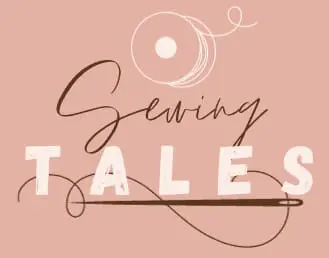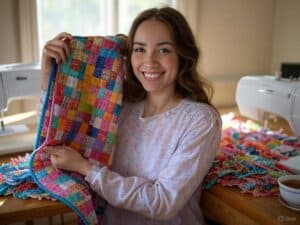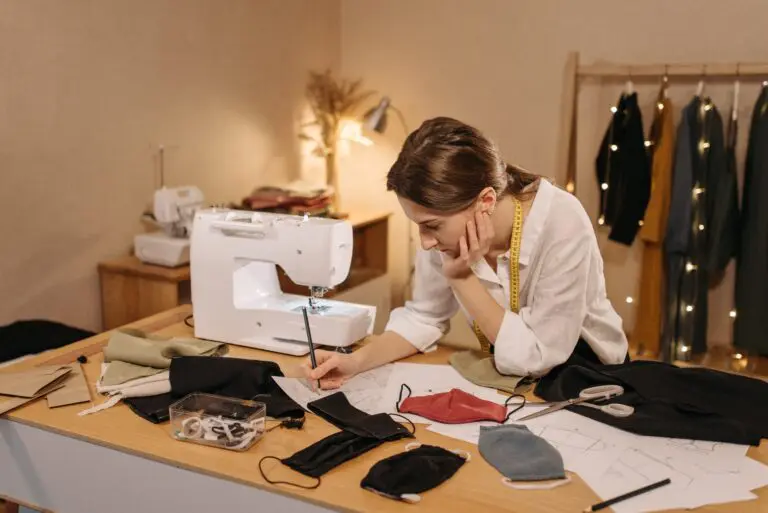Start making money doing what you love most! Don’t let your passion for sewing get stuck in a hobby box. If you’re looking to sell your sewing patterns, you need to know the steps on how to make a business out of it.
For one, you need to look to start simple.
Sewing patterns are used as templates. They act as stencils to help with cutting and assembling clothes and accessories. Sewing patterns can range from something simple enough for beginners or advanced sewers (if that’s what you call them) and sometimes come with instructions and sizing information.
The Pros of Selling Sewing Patterns
More people now than ever before feel the urge to do everything themselves to leave a positive impact on the world. And what better way to do so than by making our clothes with that old sewing machine sitting in the corner? Before you know about how to sell sewing patterns, get informed about its benefits:
- Selling sewing patterns is super effective.
- You can share unique designs
- It’s cost-effective because no physical inventory is needed when you sell digital patterns.
- You get multiple sales off one pattern, so there’s no need to worry about income flow.

Types of Sewing Patterns
We live in a time where people want stuff done themselves but also want it done right. More and more people are turning to the art of sewing with the knowledge of how to sell sewing patterns to express themselves through their clothing. Before delving into how to sell sewing patterns, a sewer must have these tools at their disposal.
Whether you’re just starting or consider yourself an expert, these different types of sewing patterns open up thousands of possibilities when creating garments. They come in all shapes and sizes too! From modern trendy pieces to vintage-inspired designs, these sewing patterns even cater specifically to certain styles and skill levels as well. They are:
- Apparel patterns (clothing)
- Home decor patterns (curtains, pillows, etc.)
- Accessories patterns (bags, hats, etc.)
- Toy and doll patterns
- Quilting patterns
- Costume patterns
- Pet clothing patterns
Sewing patterns act as templates for clothes. They give you the information and guidelines to put together cut fabric pieces into something wearable. Some are easy enough for beginners to make and then some can challenge even the most advanced! By knowing what types of patterns there are, creators can choose the best one for their project.
1. Regular Apparel Clothes Patterns
This is probably the most common one of them all. Regular clothes patterns make garments for men, women, and children. Inside this type, you might find instructions on how to make things like dresses, pants, skirts, shirts, outerwear, or anything that you could wear on your body. Depending on the pattern it might come in multiple sizes and variations so you can customize a piece’s length or fit.
2. Home Decor Patterns
You guessed it! These types of patterns are made specifically to decorate homes. They include curtains, cushions, slipcovers, or anything else used to spruce up living spaces. You could be making an easy pillowcase or taking on window treatments that require advanced sewing techniques.
3. Accessory Patterns
This category focuses on smaller projects. Things like hats, bags, scarves, or belts fall under accessory patterns. This type is great if you want to add more than just a garment to your outfit but don’t want something too complex to take up your time.
4. Toy and Doll Patterns
If you’re a parent looking for unique toys or maybe someone who likes collecting dolls then this type is for you! Toy and doll patterns vary from simple stuffed animals to dolls with their own set of clothing patterns (kinda like Barbie).
5. Quilting Patterns
Unlike other types here quilting refers to a crafty technique where layers of fabric get stitched together into heavy blankets (or maybe they’re light? I never thought about that). The designs given in quilting patterns show how scraps should be sewn together into blocks which eventually become bedspreads or wall hangings.
6. Costume Patterns
Cosplay nerds and theater geeks can attest to the importance of costume patterns. They keep everything accurate and make sure sewers don’t get ahead of themselves when creating a character’s clothing. These are often very detailed and need specific types of fabric or decorative touches for desired effects.
7. Pet Clothing Patterns
Another fun one! Pet clothing is becoming more popular every day and the curiosity behind what our furry friends will look like in clothes isn’t dying down either. This type has a range from coats to costumes that you’d put your pet in on Halloween.
Each of these types of patterns requires a different skill set and understanding of sewing techniques. When choosing a pattern to sew with, it’s important to consider the complexity of the design, the type of fabric that’s recommended, as well as the fit and customization options offered— on top of your expertise level — to ensure a successful and satisfying outcome. Patterns are what help bring creative visions to life— whether creating a simple toy or an elaborate wedding gown.
Vintage Fashion Patterns are a Great Choice Too
In recent years, vintage fashion has skyrocketed again! But this time around, it’s not being done by big brands like Gucci or Louis Vuitton, it’s coming straight from our closets! This has people hunting for any vintage sewing patterns they can find. Some even go as far as spending tons of money to get that rare or unique design. If you have some old patterns lying around, now is the time to get rid of them!
Contemporary has had its moment… but who says it’s gone? — No one! Even though we love the vintage look we’re always looking for ways to put our spin on things. With PDF sewing patterns, sharing your designs has never been easier. Cash in while you can!
In fact, retro sewing seems to have its own fan base and creates and brings nostalgia for many.
So if you think your pattern will appeal to this market, don’t hesitate! It doesn’t matter if you think it’s too simple or complex just go ahead and make it. Find your target audience and just shoot!

Crafting the Perfect Sewing Pattern
Use resources like fashion magazines, runway shows, and online forums to gather insights. This research will keep your designs popular.
1. Designing Something Different but Usable
Your patterns should stand out and be suitable for various styles and occasions. A mix of timeless designs and modern trends can attract customers of all types. Make sure they’re versatile enough to adjust for different looks.
2. Incorporating Clear and Detailed Directions
Instructions on how to sell sewing patterns can make or break a pattern. They need to be clear, straightforward, and filled with tips for difficult steps. Your goal is to have simple instructions that’ll work for people new to sewing as well as seasoned veterans.
3. Choosing the Proper Format (Physical, PDF)
Digital PDF patterns have grown in popularity due to their accessibility and lower costs when producing them. However, not everybody likes digital copies. Consider selling both options so your customers have a choice.
Building Your Online Store to sell sewing patterns
Staying in the loop with the latest trends and sewing techniques will help you create patterns that sell.
1. Picking the Right Platform
Choose an e-commerce platform that suits your brand while being easy to use. There are specialized websites made specifically for crafts or general marketplaces like Amazon or Etsy. When making your decision look at features such as custom branding, analytics, and customer support.
2. Crafting a Professional Storefront
High-quality pictures along with easy navigation will attract more people than something thrown together at the last second would. Your website must reflect who you are as a person because this is what sells.
3. Managing Inventory
Keeping track of how many patterns you’ve sold vs how many you still have is crucial for growing your business. The thing about digital products is there’s no limit to how many times someone could download it once they buy it from you — unless there is a limit then disregard that whole part I just said.
Steps to Start Selling Your Own Sewing Patterns
Now that we know the different types of sewing patterns, time to start selling them.
1. Design a collection:
Start by designing a collection of sewing patterns that align with your personal style and expertise. Consider creating patterns for different categories like clothing, accessories, or home decor to appeal to a wider audience.
2. Test and make adjustments:
Before selling your sewing patterns, it’s important to test them by creating samples and ensuring they are easy to understand. Make sure they are simple enough to follow. It may be hard for you but other people with less experience than you need to use these instructions too. Make any necessary adjustments or improvements based on feedback from testers.
3. Digitalize your patterns:
Use software or graphic design tools to convert your analog patterns into digital ones. This will make it easier for people online to buy them from you. Ensure that your patterns are in a printable format and include instructions on how someone would print something like this out at home.
4. Set up an online platform:
Create a website or use another site’s e-commerce platform to sell your patterns through. your designs on an existing e-commerce platform such as Etsy or Craftsy. Don’t forget about product descriptions, high-quality images, and pricing information.
5. Use social media:
Go onto platforms like Instagram or Pinterest and showcase your designs there! Influencers can be great advertisements too! Partner with well-known bloggers so they can show off what you made! Even better if you give them out for free! The more interest people have the better!
6. Answer customer inquiries quick:
You must respond quickly to customer queries. Knowing what they want and giving them the information they need will help improve conversions. In fact, nearly 50% of customers expect a business to reply to them in 4 hours or less, according to a study by Super Office.
7. Consider licensing:
If one pattern just blows up then try giving it out as a license… get some money off it!
8. Seek feedback from customers:
Ask customers how you could potentially improve your designs! Listen closely because this can be vital in helping build a loyal fan base which will grow your business exponentially.
Remember the most important part is passion and creativity. With those, everything else will fall into place.

Marketing Your Patterns
1. Using Social Media Platforms (Instagram, Pinterest, Crafting Forums)
For the sake of time, I’ll skip over all the stats and just give you my personal opinion. Posting pictures on Instagram with captions like “OMG guys look at this amazing pattern!” will probably do a good job of getting people to buy your stuff. Social media platforms are an integral part of the guide on how to sell sewing patterns.
2. Collaborating with Influencers and Bloggers
By collaborating with influencers that have a similar audience as you, their followers will more than likely want to buy your patterns. All you have to do is send them one for free (two if they ask what size you wear), and they’ll post pictures in it.
3. Offering Promotions
I mean… who doesn’t like discounts? By giving people a sale they’ll feel like they’re missing out if they don’t capitalize on the opportunity now. So go ahead and cut your prices.
4. Providing Excellent Customer Service
Respond quickly and be nice when people message you or leave reviews. A lot of the time a simple response can convince someone not happy with their purchase to change their mind about returning it.

Future
By understanding who your target market is then creating patterns suited for their needs is only half of it. You also have to create an online store that makes people feel comfortable enough to buy things from. Use social media platforms properly. So many people are seeing what you’re selling.
You may work with influencers who know something since they already built up a following themselves. Price your items correctly so people want them but still leave room for profit after the discount is applied.
Finally, be kind every step of the way once someone buys something from you because not only does that make them feel special but also makes them more likely to return and tell friends — because remember “word-of-mouth” isn’t called just word-of-mouth anymore it’s called “tag 3 friends”.







